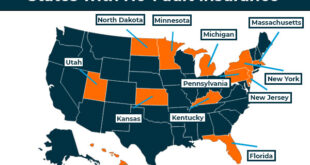Emergency Loan Options: Reliable Solutions in Times of Need Emergencies can strike unexpectedly, leaving people scrambling for financial support. Emergency loans are a crucial resource in times of need, offering fast access to funds for urgent expenses. In this article, we’ll explore the best emergency loan options, provide tips for a smoother application process, and answer frequently asked questions. Let’s dive in.
1. Understanding Emergency Loans
Emergency loans are short-term, quick-access funds designed for unexpected expenses, such as medical emergencies, urgent repairs, or unforeseen travel needs. Many lenders offer streamlined application processes, and some options provide funding within 24 hours.
2. Types of Emergency Loan Options
- Personal Loans: Unsecured loans that provide a lump sum to cover various expenses.
- Payday Loans: Short-term loans designed for small, immediate cash needs, typically due by your next payday.
- Credit Card Cash Advances: Allow you to withdraw cash up to a certain limit using your credit card.
- Title Loans: Secured loans where your vehicle title is used as collateral.
- Borrowing from Friends or Family: A fast, interest-free option if you have a supportive network.
3. Factors to Consider When Choosing an Emergency Loan
- Interest Rates: Compare rates across lenders, as emergency loans often have higher rates than traditional loans.
- Repayment Terms: Look for terms that align with your financial ability to repay.
- Loan Amount: Ensure the loan covers your needs without over-borrowing.
- Fees: Watch for processing fees, late fees, and early repayment penalties.
- Approval Time: Choose lenders with fast approval times if you need urgent funds.
4. Pros and Cons of Emergency Loan Options
- Pros:
- Quick access to funds
- Flexible loan types for different needs
- Available even for borrowers with lower credit scores
- Cons:
- Higher interest rates
- Risk of falling into debt if not repaid promptly
- May require collateral for secured loans
5. Steps to Apply for an Emergency Loan
- Assess Your Needs: Determine the exact amount required.
- Check Your Credit Score: Some options may offer better terms for higher scores.
- Compare Lenders: Research various loan providers to find the best rates and terms.
- Gather Required Documents: Have your identification, proof of income, and bank details ready.
- Submit Your Application: Complete the lender’s online or in-person application form.
- Review the Terms Carefully: Be aware of repayment terms and conditions.
- Receive Funds: Upon approval, funds may be disbursed within hours or the next business day.
6. Top 5 Emergency Loan Providers
- SoFi: Known for flexible terms and competitive rates.
- Avant: Offers loans for lower credit scores with fast funding.
- Upstart: Uses AI to evaluate loan applications, helping to approve applicants with non-traditional credit histories.
- OneMain Financial: Provides both secured and unsecured options.
- LendingClub: Offers peer-to-peer lending with reasonable rates.
7. Tips for Securing an Emergency Loan Successfully
- Tip 1: Opt for a secured loan if you have valuable assets; it may result in lower interest rates.
- Tip 2: Borrow only what you need to avoid unnecessary debt.
- Tip 3: Understand all fees involved to prevent unexpected costs.
- Tip 4: Consider your repayment capacity before applying.
- Tip 5: Check if the lender offers penalty-free prepayment.
- Tip 6: Avoid payday loans if possible, as they often come with exorbitant fees.
- Tip 7: Explore credit union options, as they may offer favorable terms.
- Tip 8: Improve your credit score to qualify for better rates.
- Tip 9: Use loan comparison sites for a better overview of terms.
- Tip 10: Have a clear purpose and repayment plan for the loan.
8. FAQs about Emergency Loans
- Q1: Can I get an emergency loan with a bad credit score?
- A: Yes, some lenders specialize in offering loans to people with low credit scores.
- Q2: How quickly can I receive an emergency loan?
- A: Some lenders provide funds as quickly as the same day or within 24 hours.
- Q3: Are there emergency loan options without interest?
- A: Most emergency loans have interest, but borrowing from family or employer-based assistance may be interest-free.
- Q4: How much can I borrow through an emergency loan?
- A: Loan amounts vary by lender and can range from $100 to $50,000.
- Q5: What documents are needed for an emergency loan application?
- A: Typically, you need ID, proof of income, and bank details.
- Q6: Will applying for an emergency loan impact my credit score?
- A: A hard credit inquiry can affect your score slightly, but on-time payments can improve it.
- Q7: What happens if I can’t repay my emergency loan on time?
- A: You may incur late fees or penalties, and it can negatively impact your credit score.
- Q8: Are emergency loans available without a bank account?
- A: Some payday lenders may allow cash pick-up or other methods, but most require a bank account.
- Q9: Can I use an emergency loan for medical expenses?
- A: Yes, emergency loans are frequently used for urgent medical costs.
- Q10: Do emergency loans require collateral?
- A: Some options, like title loans, are secured, while others, like personal loans, are unsecured.
Conclusion
Emergency loans are an invaluable resource for covering unexpected expenses, especially in times of need. Choosing the right option requires careful consideration of factors such as loan type, interest rates, and repayment terms. By understanding your needs, comparing options, and applying strategic tips, you can secure an emergency loan with favorable terms.
Whether you’re facing a medical emergency, an unexpected home repair, or any other financial urgency, emergency loans provide a practical solution when time is of the essence. With the right approach, you can gain access to the funds you need without unnecessary stress, enabling you to focus on what matters most: resolving your emergency and moving forward.
 Gerbang Finance
Gerbang Finance

